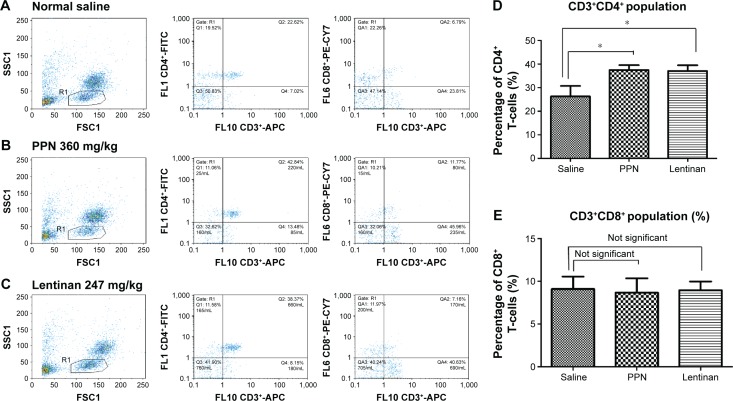Figure 4.
PPN administration increased CD3+ and CD4+ T-cell population.
Notes: Twenty-four hours after H22 inoculation, the mice were randomly divided into three groups, with each group containing six mice. Mice in each group were orally administered 0.4 ml of NS, 0.4 mL Lentinan (247 mg/kg), or 0.4 mL PPN (360 mg/kg), respectively, for 10 days. Lymphocytes from peripheral blood were collected and labeled with fluorescent monoclonal antibodies specific to CD3, CD4, CD8, or CD49b. Labeled cells were analyzed by Partec flow cytometer. The representative flow cytometry analyses of the gating (column 1), CD3+CD4+ (column 2), and CD3+CD8+ (column 3) T-cell populations of the NS (A), PPN (B), or Lentinan (C) treated groups are shown. The quantization of the CD3+CD4+ T-cell populations of each group are shown in D and the CD3+CD8+ T-cell populations of each are shown in E. The CD3+CD4+ T-cell population was significantly increased after PPN (360 mg/kg) administration. There was no statistical difference in CD8+ T-cells or NK cells comparing PPN administration to the saline control (*P<0.05).
Abbreviations: APC, allophycocyanin; FITC, fluorescein isothiocyanate; FSC, forward scatter; NS, normal saline; PE-CY7, phycoerythrin-cyanine 7; PPN, Panax notoginseng; R1, region 1; SSC, side scatter.

